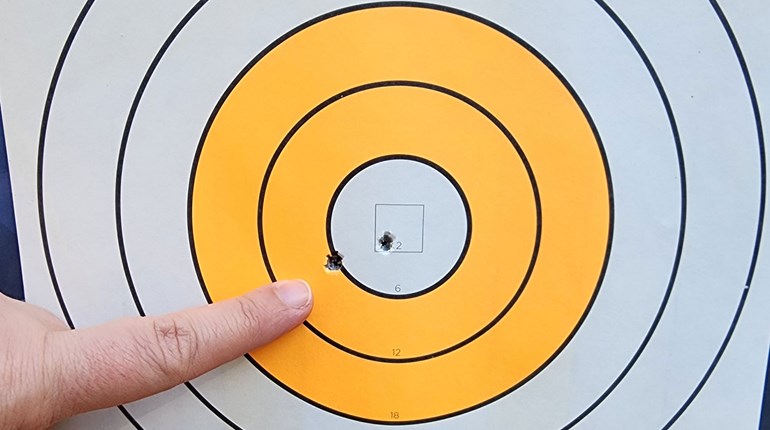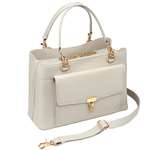
\When hunting season is over, it’s time to put your hunting rifles and shotguns up for the season. For most of us, that means they’re going into a gun safe or a locked gun cabinet, but now is the perfect time to do a thorough clean and a little maintenance and make sure they’re properly stored. Here’s how.
The first step is to clean your firearm thoroughly—well beyond the quick wipe-down you might have given it after each day afield throughout the season. Double-check that the gun is unloaded. Clean the barrel of your rifle or shotgun using a mild solvent (Hoppe’s No. 9 is a classic) and, for rifles, also using a copper solvent to remove copper fouling. It isn’t strictly necessary to remove copper fouling every season, but if you make it an annual end-of-season tradition, it won’t get neglected for years on end. Be aware when cleaning that some solvents can harm the finish of your stock, whether it’s synthetic camo-dipped or a stained walnut. Be careful to keep the cleaning supplies limited to the metal parts.
 The bolt and the action of any gun should be thoroughly cleaned, paying special attention to the gas system on your semi-auto shotgun, if applicable. Clean your shotgun’s removable choke tube and lube it up with choke tube grease (not gun oil) before screwing it back in, and wipe down the other choke tubes you might have used during the season and put back in their case, too, for good measure. Inspect and clean any extra external magazines for your rifle.
The bolt and the action of any gun should be thoroughly cleaned, paying special attention to the gas system on your semi-auto shotgun, if applicable. Clean your shotgun’s removable choke tube and lube it up with choke tube grease (not gun oil) before screwing it back in, and wipe down the other choke tubes you might have used during the season and put back in their case, too, for good measure. Inspect and clean any extra external magazines for your rifle.
Apply a light layer of oil to all metal parts. I repeat: A light layer. Too much oil can turn gummy over time or collect dust. If your gun has gotten seriously wet during the season, it’s extra important that you don’t miss any spots, and doubly so if it’s been exposed to salt water. Take it to a local gunsmith for a complete takedown and cleaning if you’re concerned about water exposure on the interior parts—many gun manuals do not recommend that you do a full disassemble yourself, and doing so might void your warranty.
While you’re cleaning, inspect the gun for any cracks, pits, bulges or other worrisome flaws. Most of these need to be addressed by a gunsmith, and now’s the perfect time. If you have a wood stock that needs a little TLC, particularly if it’s not lacquered, give it a rub with some boiled linseed oil or wax, depending on what it needs. Gently clean the glass on your optics with an appropriate cleaner and a non-scratching cloth. Check that any screws are still tight. When you’re sure everything is in good order, give the whole exterior of the gun a wipe-down to remove any oils your fingers might have left.
Some people like to decock their firearm to remove tension from the action while the gun is in storage. My hunting guns don’t stay put up for years at a time, so I don’t always bother with this. If you’d like to do it, research how to safely decock your particular gun—on some guns, a simple dry-fire does the trick; other models shouldn’t be dry-fired or require an extra step or two. If you plan to store the gun for a long time (years) without using it, you might consider disassembling it for storage just to make sure there’s no tension anywhere and all metal parts are properly oiled against rust.
I recommend you store the gun with the action closed and any external (empty) magazine inserted. This keeps dust out of the interior and also prevents the magazines from getting separated from the gun and eventually lost.
When the gun is thoroughly cleaned, I like to slide it into a silicone-treated gun sock for storage. These are cheap and protect the gun from bumps and dings as you’re moving guns around in the safe, and they help keep moisture and dust away from your gun. Make sure your gun socks have a label on them so you can identify which gun is in which sock—you’ll thank me later when you’re rooting through the safe. I store most of my long guns with the barrel pointed down. If I’ve accidentally applied a little too much oil to some unseen interior part, the oil will drain down away from the stock. This is particularly important for wood-stocked guns, as gun oil can soak into the stock and damage the wood over time.
However you store your hunting firearms, the number one thing you must avoid is moisture. If you live in a humid climate, consider dehumidifying measures inside your gun safe or cabinet. I use a bottle of DampRid and change it out regularly; desiccant packs and dehumidifying rods are also good options. If you don’t have a safe or a standing, lockable, multi-gun cabinet, you might intend to store your gun in a regular case like the type you might use for travel. Be careful. Guns need air circulation in order to avoid moisture damage. Do not store your gun for any length of time in a leather, waterproof or nonbreathable case of any kind. If it cannot breathe, it will eventually rust.
While You’re At It…
While you’ve got the safe open, now’s the time to take stock of everything you’ve stored in there. It’s a pain, especially if you have a lot of guns, but pull everything out. Tidy up the small items that tend to get scattered around over time—jewelry, passports and the like. Pull each firearm out of its sock and give it a quick inspection to make sure nothing is developing rust. Reapply a light layer of oil to anything that needs it, and wipe everything down before it goes back in its sock.
Pull out and update your gun inventory if you’ve bought or sold any firearms in the past year, and make a note to send the updated version to your insurance agent if that’s something you do. It’s not a bad idea to take an annual ammo inventory, too, and see what you’re running low on. This is a good time to tidy up the ammo shelf, but I admit I’ve been slacking in that department and my ammo closet is a little messy these days.
Now you’re ready to fill the safe back up. I try to put the least-used guns in the back so the ones I use more frequently are right in front and I don’t have to play Safe Jenga every time I want to take one out. If you’ll be hitting the turkey woods this spring, give your turkey gun a quick once-over to make sure it’s in good working order, and go ahead and store it front and center. Don’t forget to store your firearms barrel-down if you have room.














































